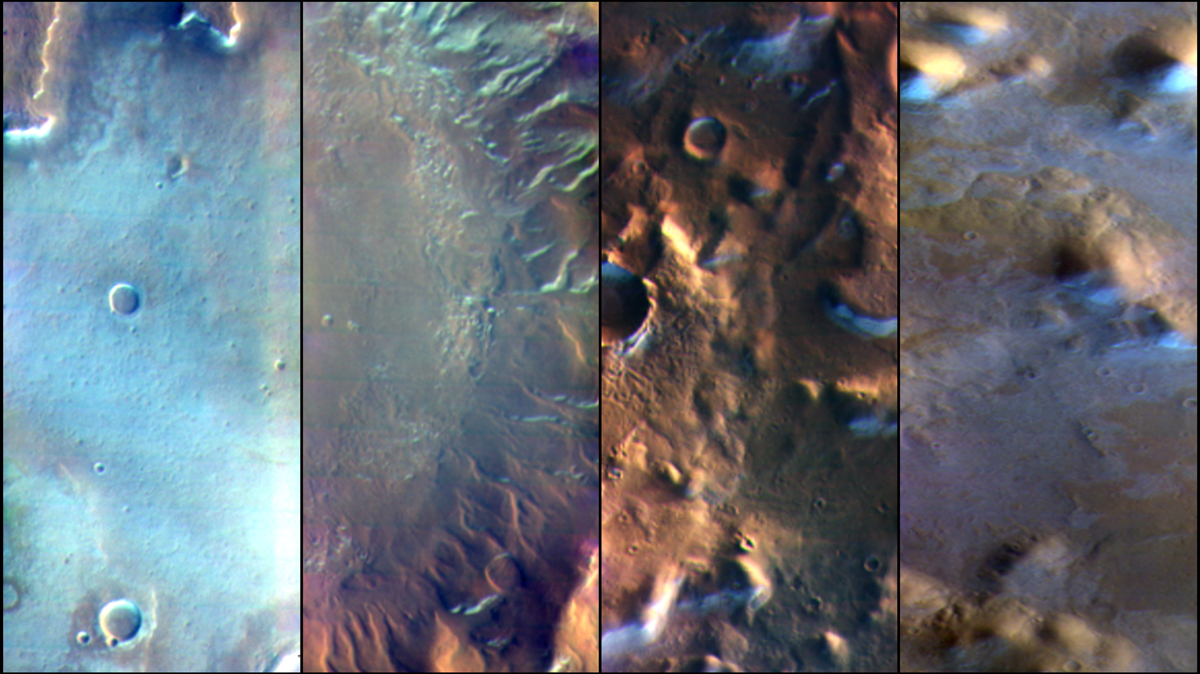
Image courtesy of: NASA/JPL-Caltech/ASU
When we think of frost, images of glittering snow blanketing the world come to mind but Mars, as always, tends to do things a little bit differently. In recent images captured by NASA’s Thermal Emission Imaging System (THEMIS) camera, layers of frost can be seen in the early hours of the morning on the planet’s surface. The frost seems to reflect a rainbow of colors almost reminiscent of an oil spoil. This is due to the largely carbon dioxide makeup of the frost, think dry ice, which casts a blueish-white color that also mingles with reflecting light rays. Dazzling, isn’t it?
The images proved to be somewhat baffling to scientists. When they looked at the surface using only visible light – the kind that the human eye perceives – they could see the ghostly, blue-white frost illuminated by the rising Sun. To gain more data, the orbiter’s infrared heat-sensitive camera revealed the frost appeared in even more areas where none was clearly visible to the naked eye. Why is this dry ice frost visible in some places and not others?
Some scientists hypothesize that the phenomenon is “dirty frost” – dry ice frost mixed with fine grains of dust that obscured it in visible light but not in infrared images. The dirty frost might also provide an explanation for the visible dark streaks that are recorded to stretch nearly 3,300 feet across parts of the Martian surface. The streaks perhaps resulted from dust avalanches which slowly reshaped the mountainsides across the planet. These streaks tend to appear in places with morning frost and may be the result of vaporized frost creating just enough pressure to loosen surface dust grains, causing an avalanche and revealing the dark streaks.
While more research is needed to better understand the makeup of the Martian surface, the THEMIS camera is continuing its image captures to aid in the task. The THEMIS camera is mounted aboard NASA’s 2001 Odyssey orbiter and is a result of a joint collaboration by Arizona State University and Raytheon Santa Barbara Remote Sensing. Its goal is to view the visible and infrared reflections from the Martian surface to make a map revealing the locations of various mineral concentrations and their relationship to various landforms. Mission operations are conducted jointly from Lockheed Martin in Denver, CO and from Jet Propulsion Laboratory, a division of Caltech in Pasadena.
To learn more about NASA’s THEMIS imaging system, click here.